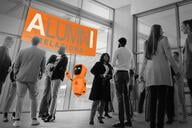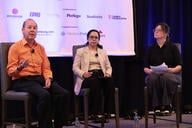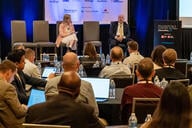You have /5 articles left.
Sign up for a free account or log in.
Online higher education is increasingly hailed as a chance for educators in the developed world to expand access and quality across the globe.
Yet it may not be quite so easy. Not only does much of the world not have broadband or speak English, but American-made educational material may be unfit for and unwanted in developing countries, according to academics who have worked for years on online distance education and with open educational resources, or OER.
Their experience raises questions about a utopian vision. This vision foresees online courses bringing education to students of all longitudes and latitudes, while reducing the need for brick-and-mortar universities. This goal of “democratizing education” using technology is gaining popular appeal among investors, some professors, pundits, politicians and the public amid the recent craze for massive open online courses, or MOOCs. But some scholars question whether an American-based effort can do this. While MOOCs are new, scholars have wrestled with questions about cultural barriers for years in the OER community.
Some educators worry a one-way transfer of educational materials from the rich north to the poor south will amount to a wave of “intellectual neo-colonialism.”
Lani Gunawardena is the co-author of a forthcoming book on global culture and online education. She said some global distance education evangelists tend to assume everybody speaks English and has the same priorities as they do.
“If they are going to democratize education, which is a good goal, you have to go to the different democracies and see what they want,” Gunawardena, a professor of instructional technology at the University of New Mexico who also teaches online courses, said. “You cannot put your personal point of view there and say you’re democratizing education.”
While MOOC providers regularly cite compelling examples and testimonials from students in far-flung locations who have benefited from their courses, examples of possible endemic disconnects span the world: from educators in Africa who prefer to create their own content rather than rely on exports from the United States to American Indians who, even within the United States, lack access to the reliable Internet connection necessary to enroll in online courses.
The African Virtual University was created based on work the World Bank began in 1995 to provide education in sub-Saharan African. It now supplies coursework that helps graduate 4,000 students a year. It doesn’t simply want to import Western-made content for its students. Instead, it wants to flex its own muscle by building material on its own.
“They believe that the process of developing these courses trains everybody from support staff to professors to teach online,” said Larry Cooperman, the director of OpenCourseWare at the University of California at Irvine and a member of the African Virtual University’s board of directors.
By building its own courses, the virtual university can get staff to run the network, repair computers and support local professors, not to mention money to build a computer center to provide Internet access in places without it. Because of this, the courses become much more than an offering, but rather a process that can help build educational infrastructure and capacity, Cooperman said. An online course beamed in from America doesn't do this -- even if there is enough bandwidth to access it.
Cooperman said the latest round of MOOC enthusiasm has prompted concern because of the top-down nature of the material being offered on MOOCs by professors from elite Western universities. He recalled a remark from a recent conference on online learning in Africa.
“People got up and said, ‘Well, is this one course to rule them all? Will we all have to learn from MIT?’” Cooperman recalled. “Even if that’s an exaggeration, it’s not an exaggeration to say it creates increased pressure for use of the English language.” African Virtual University offers classes in English, French and Portuguese.
Two popular MOOC providers, Coursera and edX, have recently expanded their partnerships to include institutions outside of the United States. Both have said the addition of French-speaking institutions creates possibilities for a new audience in Africa.
In Brazil, academics ran into problems adapting freely available educational material because it was in English, not Portuguese.
Tel Amiel, a professor at Universidade Estadual de Campinas, wrote a recent paper that concludes the English-language and Western bias of the Internet “can potentially sustain divides, such as the division between those who traditionally create and those who consume educational resources.”
Language alone is “a huge barrier and it's not something we can deal with trivially," Amiel said in a Skype interview.
Coursera is working to address the language issues. Earlier this month, it announced a partnership with a Moscow-based center to translate material into Russian and to host in-person meetings of Coursera students in Russia.
Yin Lu, whose title at Coursera is community and culture architect, said the company is looking to do more projects that "establish real life learning spaces worldwide" and to expand into the "biggest non-English-speaking markets."
But a language barrier isn't the only thing to look to.
"I think there is some assumption of a generic learner that just doesn't repeat itself in other cultures," Amiel said.
Gunawardena said Western educators need to look at what the rest of the world needs, otherwise American-made education efforts may be heading to markets that have other priorities.
“Unless we really look at other parts of the world and what they really need, MOOCs are not going to take off,” she said.
Building on the OpenCourseWare Model
The Massachusetts Institute of Technology’s OpenCourseWare project, which popularized the idea of OER a decade ago, does not aim to create universal content, said Steve Carson, the project’s spokesman. Its goal, he said, was to create something that can be used and adapted -- something that is designed to be part of a shared process rather than an inherently finished product.
“You begin to see the value of that specificity,” Carson said. “Educational materials are not universal, but they are very, very informative for other universities to see the context in which other universities are working.”
Amiel said that was automatic advantage of OER vs. some for-profit efforts that are searching for a global audience but do not allow remixing.
"One of the things we do by creating things that are open is that we recognize by instructional design that we don't have the tools to create for every single cultural group," he said.
Without culture-specific material, some academics worry about different learning styles abroad that may be incompatible with American-made efforts.
Gunawardena said she’s done research on how people construct knowledge through online collaboration. In the West, she said there is the thinking that argument is necessary to generate knowledge, a belief that has its roots in classic Greek civilization.
But, in China, Gunawardena found students don’t necessarily openly argue with each other based on points of view. They build knowledge based on collaboration. What effect will this have on the uptake of Western-made courseware?
“It could be a major difference,” she said. “It could be subtle.”'
Online Learning Cultures
Aisha S. Al-Harthi, an assistant professor at Sultan Qaboos University in Oman, has studied differences between Arab and American learners in online courses. Her results indicate that a “one-size course does not fill all” and that courses need to be tailored to individual needs and culture.
There are also questions about what subjects may not lend themselves to online education in the first place, or to hands-off self-learning like that virtually required by MOOCs, which are based on recorded lectures and reading for students to study and automated quizzes or peer grading for students to get feedback.
Some of this might not matter in subjects with clear black-and-white outcomes, like programming courses or math and physics courses.
“If you can say, 'This is the way to do it, and this is the only way to do it,' then you lay down your formulas and people follow you – that’s fine,” Gunawardena said.
But that may not work for MOOCs on subjects that require critical thinking. “Where you want your students to engage, then they fall short," she said. "Because the thing is there is nobody there to really help you process and answer questions for you."
Moore, a student of distance education pioneer Charles Wedemeyer, began his own career in distance education 50 years ago using radio transmissions in East Africa. He said reaching a diverse global audience can be done, as long as educators know that is what they want to do. “You can absolutely do it. I guess the first step, just as with the classroom, is to know it’s something you want to do,” Moore said. “And the anxiety and the suspicion is greater across the technology than when they can actually look you in the eyes.”
Moore said one of the things he’s learned is that no single distance education method is going to be fully successful. “Our institutions keep making the same mistake over and over again,” he said. “They keep using one or a limited number of technologies or media.”
While MOOCs remain crude, he said they do have scale. Now, they need to develop some know-how to pull off what they may be attempting to do.
Moore said it’s harder to reach students in a recorded lecture than a live online platform because it’s harder to communicate empathy and understanding. He also worried about MOOC professors who want to be “stars” rather than members of the sort of educational team that might make for a successful online education effort.
“For American people teaching overseas, they are not going to be 100 percent successful, neither are they going to be 100 percent unsuccessful,” Moore said.
Several academics worried online classes are designed without appreciation for a global audience. “If every business case is an IBM case, but there are companies everywhere in the world, then you’ve just done something that doesn’t make sense to somebody,” Cooperman said.
Amiel said it seems obvious in Brazil but a lot of the examples that American professors use in their classes don’t travel well.
"If you're using a math example that uses American football, you are really talking to a small audience; people don't really understand what you're saying," he said.
Amiel said the American food pyramid features a bagel. Some people don’t know what a bagel is, so a graphic meant to explain a concept has potentially complicated it.
Challenges of Different Populations
Al-Harthi said cultural differences also create problems for peer grading, which are what MOOCs currently rely on to grade student writing.
“Different cultures look at feedback, the need for it, and who is giving it differently,” she said. “ In MOOCs, the use of peer assessment, which is the ‘second best’ when you have so many students, raises questions about the cultural assumptions of peers, especially that young people tend to be more culturally conservative in comparison with more experienced professors.”
Even within the United States, there is a population that may be hard to reach: American Indians. Reservations lack bandwidth, can feature lingering hostility toward academics and have an approach to learning that is not the same as others in the United States, according to several professors with experience teaching American Indians.
Educators who hope to recruit American Indians for online classes may do best if they show up on the reservations to recruit students or sway tribal councils.
Dwight Kala Lomayesva runs the Tribal Learning Community & Educational Exchange, an online program at the University of California at Los Angeles.
He said there are some basic cultural differences: Indians think in terms of groups rather than individuals, something that changes how they respond to material.
Also, academics and American Indians have a loaded history: across the country, Indians have battled with archeologists who have dug up ancestral remains and refused to return them to the ground.
“Every time you hear about academia is, ‘Oh they are robbing our heritage by taking away all our stuff,’ ” Lomayesva said.
While online education has been sold as a way to reduce staff time, there are also limits to that, too.
Professor John Bathke, who teaches tribal courses for UCLA, said Lomayesva shows up on reservations to form personal relationships with tribal councils who can get the word out about online courses. Without that personal touch, he said, the program might not be as successful.
“These personal relationships are extremely important in Indian communities,” Bathke said. “They don’t tend to do well with a kind of used car salesman approach, where it’s ‘Here, I’m here to sell you something – goodbye.’ ”




